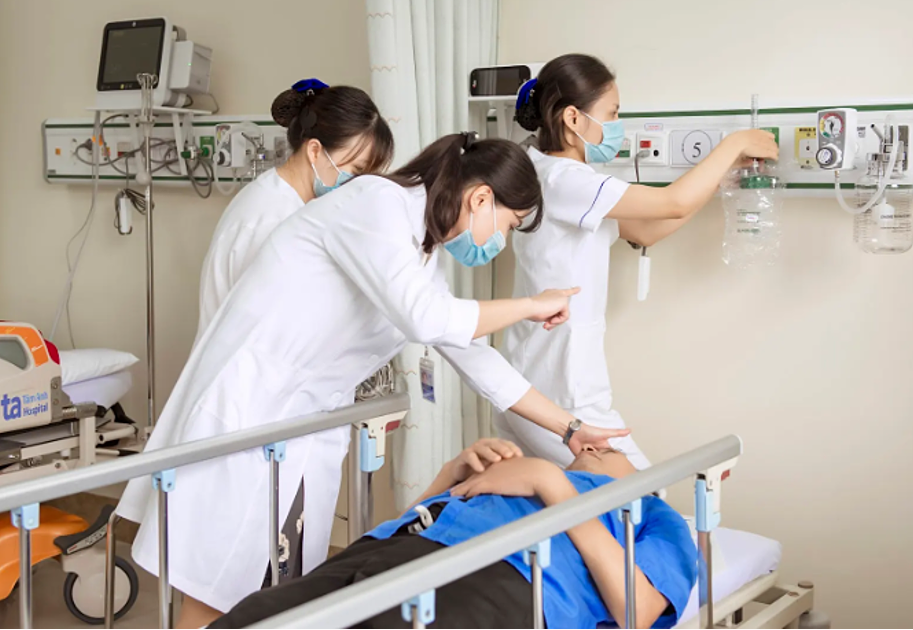"Stroke care is a race against time. Incorrect first aid, delayed arrival, or transport to the wrong facility is just as dangerous as not seeking emergency care at all," said Doctor Nguyen Duc Anh, Head of the Neurosurgery and Spine Department at Tam Anh General Hospital in Hanoi. He added that some reasons stroke patients miss the critical treatment window include late detection, using personal vehicles instead of calling 115, or going to the wrong medical facility, which reduces treatment effectiveness and increases the risk of death or severe complications.
Doctor Anh advises that when someone shows signs of a stroke, quickly assess the situation and determine how to get them to a medical facility. The best course of action is to call 115 or a hospital specializing in stroke care so an ambulance with medical professionals can come directly to the scene. During transport, patients receive initial first aid and assessment, while the hospital prepares, significantly reducing critical intervention time.
While waiting for emergency services, place the victim in a cool, clean, and well-ventilated area. Have them lie on their side with their head slightly elevated to prevent choking from vomit. Loosen any tight clothing, ties, or belts to help them breathe easier. If the person stops breathing, perform CPR and clear any mucus or saliva.
If traffic is heavy or the ambulance is delayed, transport the patient to the hospital yourself. Use a car, keeping the patient lying on their side with their head elevated at a 30-45 degree angle. Avoid sudden movements and do not give them any medication, lemon juice, or perform acupuncture. The critical treatment window for ischemic stroke is 3.5-4 hours from symptom onset. For hemorrhagic stroke, get the patient to a medical facility as soon as possible.
 |
Doctors at Tam Anh General Hospital provide emergency care to a stroke patient. *Photo illustration: Provided by the hospital* |
According to Doctor Anh, getting the patient to a specialized stroke center within the critical window significantly impacts their chance of recovery. These centers provide rapid assessment, initial emergency treatment, and prompt transport if needed. Specialized units offer intensive medical care, rehabilitation, and relapse prevention. Choose a facility with a dedicated stroke team and essential equipment like CT and MRI scanners, interventional radiology systems, and an intensive care unit.
Stroke is a leading cause of disability in adults. In Vietnam, there are an estimated 222 stroke cases per 100,000 people annually, bringing the total rate to 1,541 per 100,000 people – among the highest in Southeast Asia. Mortality and disability rates remain high, with 71% of patients losing their ability to work after treatment. Medical costs for stroke patients account for 1.12% of the global GDP.
Linh Dang
*The patient's name has been changed.
| Readers can submit questions about neurological diseases here for doctors to answer. |












